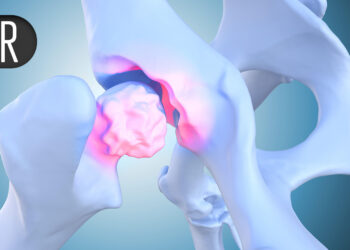TOPLINE:
Anti-calcitonin gene-related peptide monoclonal antibodies (mAbs) demonstrated meaningful and sustained effectiveness in reducing monthly migraine days (MMDs) across three consecutive 1-year treatment cycles, but the relevant burden of the disease remained high.
METHODOLOGY:
- Researchers conducted a multicentric, open-label and observational, real-world study including 179 patients with migraine (mean age, 51.3 years; 75.4% women) who initiated treatment with mAbs (erenumab, galcanezumab, or fremanezumab) between December 2018 and January 2020.
- All participants underwent three consecutive 1-year treatment cycles with mAbs (C1: the start of C1 to the end of C1, C2: the start of C2 to the end of C2, and C3: the start of C3 to the end of C3), with each cycle being separated by a minimum 1-month suspension period (S1 between C1 and C2 and S2 between C2 and C3).
- Of the 179 patients, 117 received subcutaneous erenumab 140 mg monthly; 53 received subcutaneous galcanezumab 120 mg monthly, with a 240-mg loading dose at the start of C1; and nine received subcutaneous fremanezumab 225 mg monthly or 675 mg quarterly.
- A total of 78 (43.6%) patients completed the overall three 1-year treatment cycles with mAbs and 101 (56.4%) did not complete the treatment cycles.
- Primary outcomes were the reduction in MMDs from baseline to the end of each treatment cycle and overall residual MMDs at the end of each treatment cycle; secondary outcomes were at least a 30% or 50% reduction in MMDs across each cycle (response rates). Both outcomes were evaluated using the intention-to-treat approach.
TAKEAWAY:
- Residual MMDs decreased consistently from baseline across all three cycles (P = .008): from 21.1 (95% CI, 19.8-22.4) to 9.6 (95% CI, 8.3-11.0) in C1, from 19.0 (95% CI, 17.4-20.5) to 9.6 (95% CI, 8.1-11.1) in C2, and from 15.9 (95% CI, 14.3-17.5) to 8.5 (95% CI, 6.9-10.1) in C3.
- The reduction in MMDs was comparable across all cycles: -12.7 (95% CI, -11.4 to -14.1) in C1, -12.4 (95% CI, -11.0 to -13.8) in C2, and -12.9 (95% CI, -11.4 to -14.3) in C3.
- The 50% response rates varied across all cycles: 48.0% at the end of C1, 38.0% at the end of C2, and 38.5% at the end of C3.
- Similar results were observed for the 30% response rates across all cycles: 62.0% at the end of C1, 46.9% at the end of C2, and 44.7% at the end of C3.
IN PRACTICE:
“Our results underscore the importance of the identification of potential alternative concomitant non-CGRP [calcitonin gene-related peptide] dependent dysfunctional pathways in migraine individuals,” the authors wrote.
SOURCE:
This study was led by Gloria Vaghi, Department of Brain and Behavioral Sciences, University of Pavia, Pavia, Italy. It was published online on August 06, 2025, in Cephalalgia.
LIMITATIONS:
This study primarily included individuals with chronic migraine and medication overuse as it was conducted at tertiary headache centres that typically refer to the most complex, treatment ‐ resistant cases. The Italian regulations allowed treatment restart only for patients with more than 8 MMDs, which may have led to an underestimation of response rates. The study’s findings may not be fully generalisable to all currently available mAbs treatments as most patients received erenumab and galcanezumab.
DISCLOSURES:
This study was supported by a research grant from the Italian Ministry of Health to IRCCS Mondino Foundation. Several authors declared receiving personal/consulting fees and travel grants from various pharmaceutical companies.
This article was created using several editorial tools, including AI, as part of the process. Human editors reviewed this content before publication.
Source link : https://www.medscape.com/viewarticle/anti-cgrp-antibodies-show-sustained-migraine-relief-2025a1000l8o?src=rss
Author :
Publish date : 2025-08-13 12:00:00
Copyright for syndicated content belongs to the linked Source.














